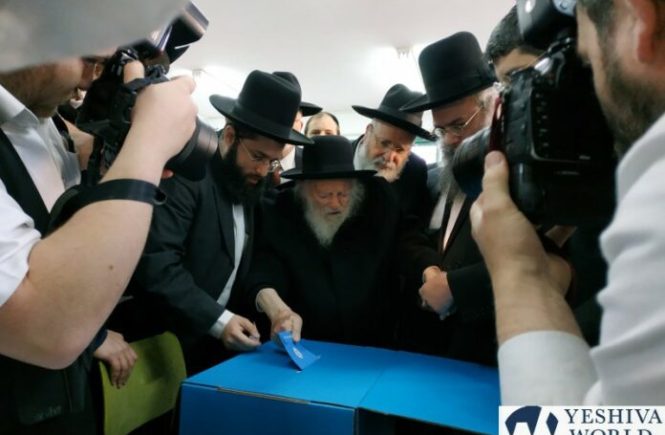The unofficial final results are in and the dust has settled. Likud was victorious in winning more seats than Blue and White but the right-wing bloc still lacks the majority necessary to form a stable government. The left-wing bloc lost seats and has no clear path toward forming a government. In essence nothing has changed and the familiar stalemate continues.
The Chareidi political parties in Israel retained the same number of seats they won in the previous elections but they actually received thousands of additional votes since the last elections only six months ago. How did they do it and what changed?
Both Yahadus HaTorah (UTJ) and Shas actively tried to woo Dati Leumi voters in Yehudah and Shomron and elsewhere and their efforts seem to have paid off. The UTJ initiative was spearheaded by UTJ MK Yitzchak Pindrus who went door to door in Dati Leumi areas and these areas did show increased amount of votes for UTJ and Shas. There were other factors that contributed to this phenomenon as well such as the fact that most voters weren’t willing to vote again for Otzma Yehudit after it showed time and time again that it could not pass the threshold. Another factor is that some Chardal (Chareidi Dati Leumi) voters stopped supporting Bayit Yehudi, the traditional Dati Leumi party, after it merged with New Right to form Yamina, a more secular Religious Zionist party.
Nokdim, the Gush Eztion moshav that is home to Yisrael Beiteinu chairman Avigdor Liberman: According to a B’Chadrei Chareidim report, the phenomenon of increased votes for UTJ in Dat Leumi areas didn’t skip over the yishuv of Nokdim in Gush Etzion, home of Yisrael Beiteinu chairman Avigdor Liberman who led especially vicious election campaigns denigrating Chareidim this past year. Yisrael Beitineu, actually received less votes on the yishuv than it did in the previous elections and there was an increase in votes for UTJ, Shas, Likud and Yamina.
The Naveh moshav, home of Yamina leader Rabbi Rafi Peretz: A full 51.47% of voters in Naveh, the moshav in southern Israel where Yamina leader Rabbi Rafi Peretz lives, voted for UTJ and only 32.35% of voters opted for Yamina. There was an increase in votes for UTJ and decrease in votes for Yamina from the previous two elections, especially compared to the first elections in April, before Yamina was formed and Bayit Yehudi ran together with Bezalel Smotrich’s Tekumah party and the New Right ran separately.
Chabad voters: Many more Chabad chassidim voted for UTJ in these elections than previously, the main reason that many Chabad voters, who traditionally voted for Otzma Yehudit due to its hardline stance on shelimus Eretz Yisrael, refrained from voting for the embattled party this time. Additionally, UTJ actively campaigned for Chabad voters, an initiative led by Deputy Education Minister and UTJ leader Meir Porush. According to the election results, Chabad communities cast about 15-20,000 votes for UTJ.
Shas also campaigned for Chabad voters and it also received a dramatic increase in votes from Chabad areas, especially impressive since Shas was considered off-limits to the community in the past due it being viewed as holding “left-wing” views in certain issues.
“Isolation votes”: And what about the voters who were in self-quarantine due to possible coronavirus exposure and had to vote at special “coronavirus polling stations”? The “isolation” crowd, consisting of 4,076 votes, seemed to have been a left-leaning one, as 2,086 of their votes went to Blue and White. The Likud received 1,020 votes, Labor-Gesher-Meretz received 580 votes, Yemina – 290 votes, Shas – 69 and UTJ – 32. The numbers are not surprising as most of the people who were first required to self-quarantine were from the Tel Aviv area.

